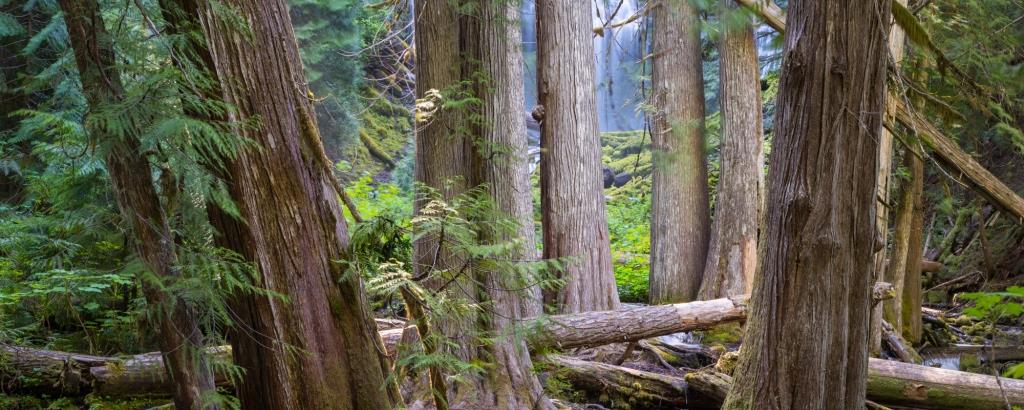Our federal public lands are managed for “multiple use” to provide clean water, fish and wildlife habitat, recreation, as well as timber. National Forests cover about 16 million acres (about 25%) of Oregon. These 10  Forests are managed by the U.S. Forest Service. The Bureau of Land Management (BLM) manages 15.7 million acres of land in Oregon – much of it high desert in eastern Oregon, but 2.6 million acres of forests in western Oregon, including "O&C" lands.
Forests are managed by the U.S. Forest Service. The Bureau of Land Management (BLM) manages 15.7 million acres of land in Oregon – much of it high desert in eastern Oregon, but 2.6 million acres of forests in western Oregon, including "O&C" lands.
Federal public lands are governed by many different laws, policies, and lines on maps. "Wilderness" areas, designated by Congress, are permanently protected from roads, logging, and other development. "Roadless" areas are often just as wild as Wilderness, just not officially designated and thus still at risk of possible development. Other areas are designated for certain kinds of logging, while still others are set aside for the needs of threatened wildlife.
Oregon's federal public lands are managed according to plans developed by the Forest Service or BLM. In western Oregon, both Forest Service and BLM lands within the range of the northern spotted owl (listed as threatened under the Federal Endangered Species Act) fall under the Northwest Forest Plan (NWFP) area, covering 9.7 million acres. The NWFP has been in place since 1994, and sets guidelines and policies for how and where logging is allowed, sets buffers and objectives for restoring streams, and lays out guidelines for managing rare and sensitive plants and animals. Logging interests have threatened the integrity of this common-sense Plan over the years, and current efforts to increase logging on BLM lands could seriously undermine its intentions and put water quality, wildlife habitat, and restoration efforts at risk.
In eastern Oregon, different rules apply to forest management. Policies are in place to protect large trees (over 21" in diameter) and streams, but management issues are much different than in western Oregon. Logging of old-growth trees, suppressing natural fires, and overgrazing have led to a landscape in need of restoration, but also one with large wild areas that offer homes to threatened species like gray wolves and sage grouse.
The public (that's you!) has a right to know and participate in what happens on our public lands. Oregon Wild comments on logging and other development plans on our public lands on behalf of our supporters, advancing our common sense vision for forest management, while holding federal agencies accountable to our bedrock environmental laws.
Explore more (COMING SOON), including how to find out about what's going on, who to contact for more information, and where to go for outdoor adventures in each of these areas:
- Western Oregon
- Eastern Oregon

